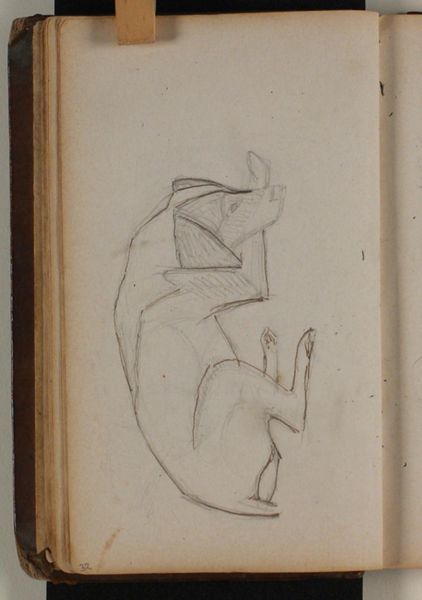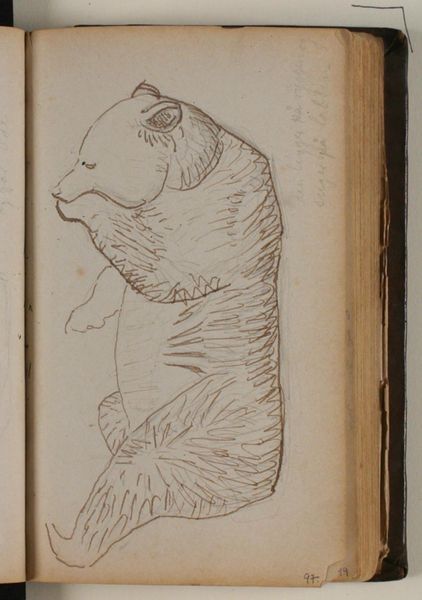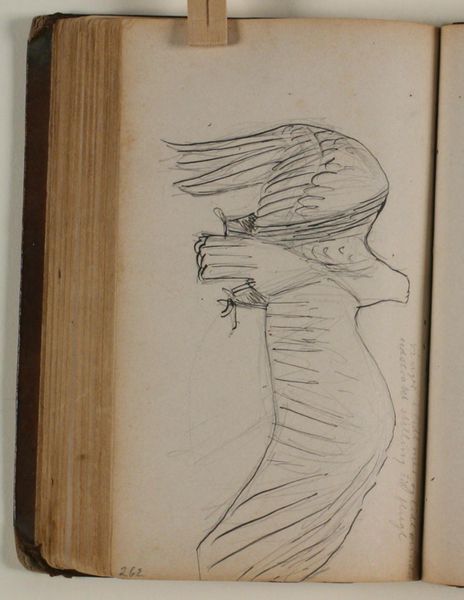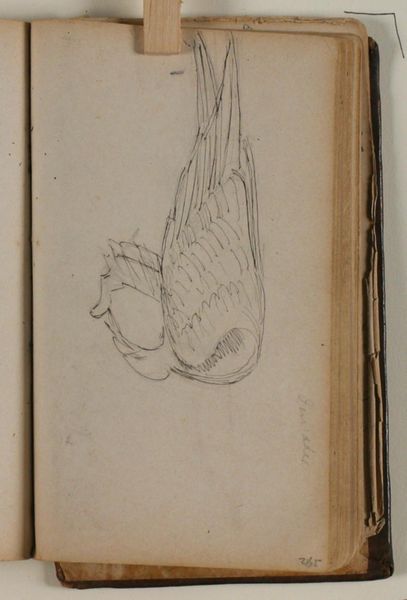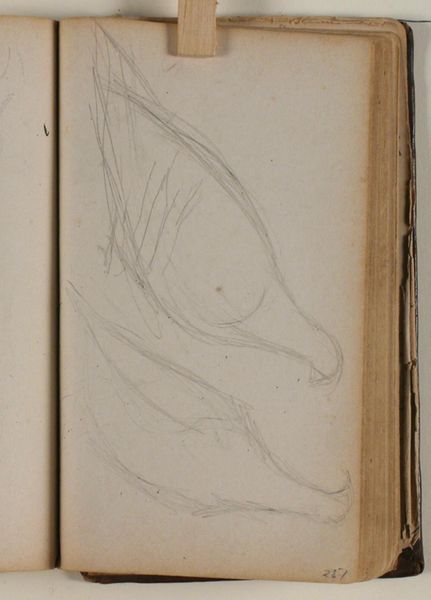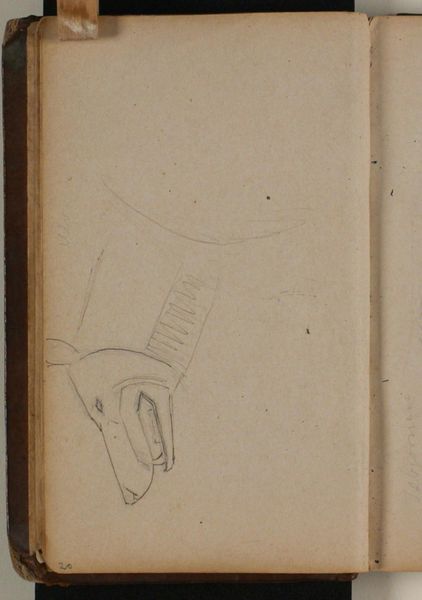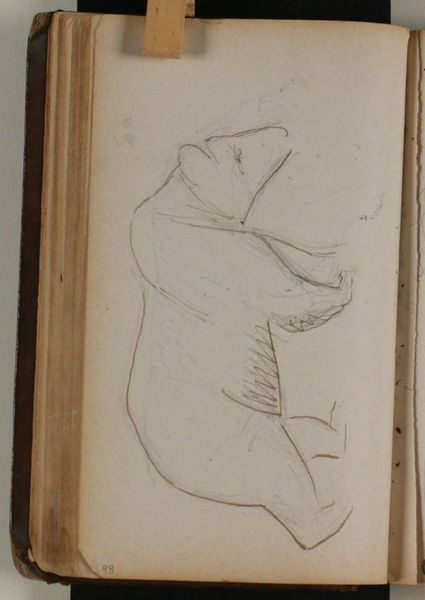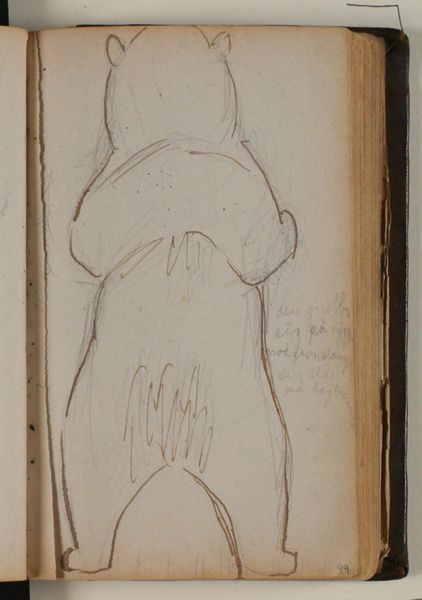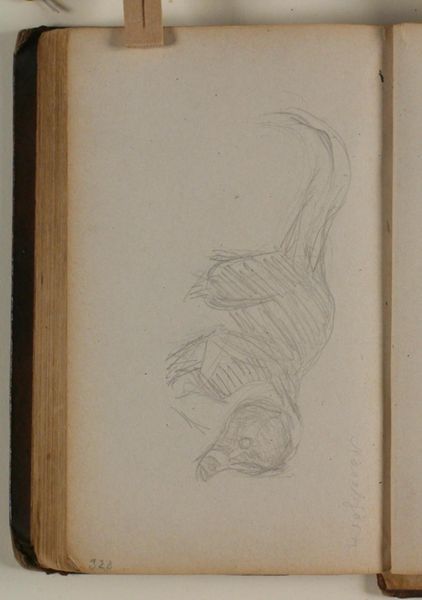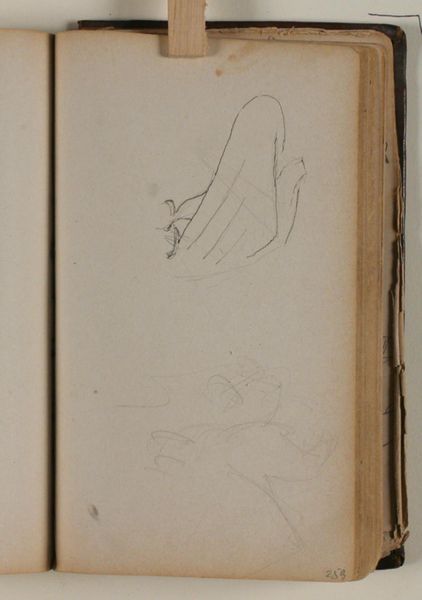
drawing, paper, pencil, graphite
#
portrait
#
drawing
#
figuration
#
paper
#
pencil
#
graphite
Dimensions: 162 mm (height) x 98 mm (width) x 23 mm (depth) (monteringsmaal)
Curator: What a stark piece! It looks like a hurried sketch. Almost as if the artist only had a few minutes to capture the animal's essence. Editor: That's true. What we're looking at is "Studie af liggende isbjørn"—Study of a Lying Polar Bear—penned by Niels Larsen Stevns sometime between 1864 and 1941. It’s graphite on paper. Curator: Given that timeframe, it invites questions about representation of the arctic in art at a crucial time, what was the artist saying about the polar bear's place in our imagination during the late 19th to early 20th century, just as climate change was entering public awareness? The politics are intriguing. Editor: It feels almost hauntingly prophetic. There's a rawness in the line work that captures the bear’s vulnerability, yet there is also this quiet defiance, I sense themes of isolation, especially when viewing it today with our understanding of habitat loss and endangered species. Curator: Precisely. And even beyond the emotional resonance, thinking historically, bear drawings and paintings would have carried connotations of colonial expansion, as well as being seen as rare finds for European viewing—this shifts the art from simple representation to an assertion of authority, wouldn't you say? Editor: It complicates the image, no doubt. Knowing the bear may have been sketched at a zoo or traveling exhibit rather than in its natural habitat gives us an added layer of critical inquiry, as you suggest. Curator: We really are invited to contemplate on this animal, from both the past to our present, right? What do you find most thought-provoking about this piece overall? Editor: Its relevance, both artistically and as a poignant symbol—to have Stevns' intimate view intersect with pressing concerns about environment feels eerily timely. What about you? Curator: I would say the fact that this is not an “finished” painting that was exhibited, rather a glimpse in a private sketchbook, that now becomes available for a wider public as evidence of the role that zoos and public spaces had at that moment for art. It encourages us to think about the role that natural sciences had at that moment, influencing what and how art was made, as well as the political context. Editor: Absolutely! Thanks for shining that light on the image; very incisive, thank you.
Comments
No comments
Be the first to comment and join the conversation on the ultimate creative platform.

